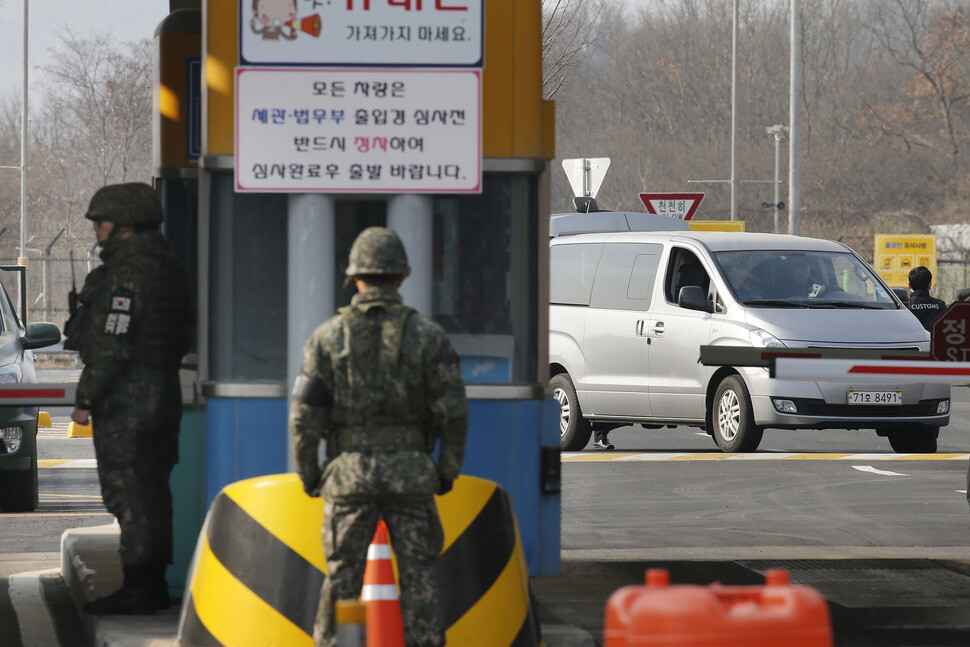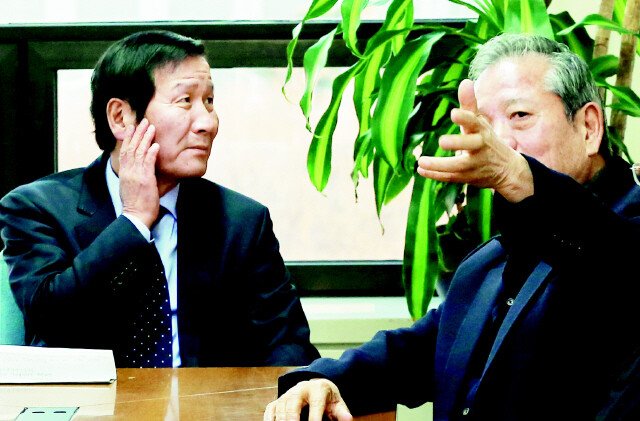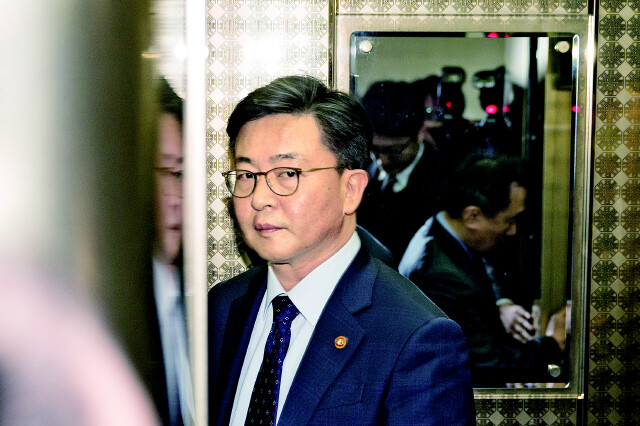hankyoreh
Links to other country sites 다른 나라 사이트 링크
[Analysis] Hard-line responses to N. Korea’s nuclear test, rocket launch carry big risks

A string of hard-line measures by South Korean President Park Geun-hye in response to North Korea’s recent nuclear test and rocket launch is moving the Korean Peninsula toward the edge of a cliff.
While the decision to begin discussions with the US on a Terminal High Altitude Area Defense (THAAD) system deployment on the peninsula has been seen by many as a self-defeating move that is likely to push tensions with Russia and China - especially the latter - to the breaking point, the move to shut down the Kaesong Industrial Complex, which has been a linchpin shoring up inter-Korean relations over the years, could be poised to bring economic catastrophe on tenant companies and their partners.
Both decisions are extremely risky in terms of setting the stage for future conflict on the peninsula and in relations with Pyongyang. Far from encouraging cooperation from China - which many see as holding the key to a concerted international response to the nuclear test and rocket launch - the decision to initiate THAAD discussions has left Seoul is the position of stirring up conflict with Beijing. And by shutting down the Kaesong Industrial Complex, South Korea is moving to get rid of the one safety valve that has kept the situation on the peninsula manageable amid growing instability. More than anything, it sets inter-Korean relations back around 30 years - leaving them back in “year zero” before the hard-won successes achieved in the wake of the Roh Tae-woo administration’s first economic cooperation efforts with the North in 1988.

The Park administration has two goals with its Kaesong shutdown. First, it wants to stop use of the wages and other revenues received through the complex toward the development of nuclear bombs, missiles, and other weapons of mass destruction (WMDs). Second, it wants to set an example with what a Ministry of Unification official called an “agonizing decision” to help steer the international community toward stiffer sanctions.
But the reasoning and approach also mean the administration is flip-flopping on its own previously stated position, when it ruled the Kaesong Industrial Complex out as a sanctions target in United Nations Security Council (UNSC) sanctions resolutions following North Korea’s first to third nuclear test and rocket launch. This decision was made on the grounds that it was a “normal economic cooperation project unrelated to WMD development.” A debate over the change now appears inevitable.
The biggest question for many is whether shutting down the complex is actually a realistic means of punishing North Korea. To date, it has achieved some US$3.2 billion (3.82 trillion won) in cumulative production, with Minister of Unification Hong Yong-pyo reporting US$560 million (616 billion won) in cash flowing into the North through wages and other payments to date. A simple comparison shows the blow to South Korea to be around four to five times greater.
“Shutting down the Kaesong Industrial Complex doesn’t punish North Korea - it’s a self-defeating measure that cuts off the livelihood for the 124 South Korean tenant companies there and their 5,000 or so partner companies,” said Inje University professor Kim Yeon-chul.

Many are also criticizing the decision in security terms for endangering peace.
“There has been the odd skirmish or other military clash between South and North under the Lee Myung-bak (2008-13) and Park Geun-hye administrations, but none on the western front where the Kaesong Complex is located,” noted a former senior official speaking on condition of anonymity.
“The complex has been something of a ‘peace project’ that has made the western front into a buffer zone,” the former official said.
The administration’s decisions to initiate THAAD discussions and close the complex are also being criticized as running counter to Park’s own stated goals of “saving the economy” - her rationale for a ten million-citizen signature campaign to urge enactment of legislation to “rescue livelihoods.”
In the case of the THAAD decision, the problem is the growing conflict with China, far and away South Korea’s biggest trading partner. With Kaesong, the issue is hurting the earnings base of tenant companies and partners with no place else to go.
“What this is about is President Park trying to trigger a response from North Korea and raise tensions to rally conservatives for the parliamentary elections in April,” argued Jeong Se-hyun, permanent representative of the Korea Peace Forum and a former Minister of Unification.
By Lee Je-hun, staff reporter
Please direct questions or comments to [english@hani.co.kr]

Editorial・opinion
![[Column] Has Korea, too, crossed the Rubicon on China? [Column] Has Korea, too, crossed the Rubicon on China?](https://flexible.img.hani.co.kr/flexible/normal/500/300/imgdb/original/2024/0419/9317135153409185.jpg) [Column] Has Korea, too, crossed the Rubicon on China?
[Column] Has Korea, too, crossed the Rubicon on China?![[Correspondent’s column] In Japan’s alliance with US, echoes of its past alliances with UK [Correspondent’s column] In Japan’s alliance with US, echoes of its past alliances with UK](https://flexible.img.hani.co.kr/flexible/normal/500/300/imgdb/original/2024/0419/2317135166563519.jpg) [Correspondent’s column] In Japan’s alliance with US, echoes of its past alliances with UK
[Correspondent’s column] In Japan’s alliance with US, echoes of its past alliances with UK- [Editorial] Does Yoon think the Korean public is wrong?
- [Editorial] As it bolsters its alliance with US, Japan must be accountable for past
- [Guest essay] Amending the Constitution is Yoon’s key to leaving office in public’s good graces
- [Editorial] 10 years on, lessons of Sewol tragedy must never be forgotten
- [Column] A death blow to Korea’s prosecutor politics
- [Correspondent’s column] The US and the end of Japanese pacifism
- [Guest essay] How Korea turned its trainee doctors into monsters
- [Guest essay] As someone who helped forge Seoul-Moscow ties, their status today troubles me
Most viewed articles
- 1[Column] The clock is ticking for Korea’s first lady
- 2After 2 months of delayed, denied medical care, Koreans worry worst may be yet to come
- 3[Column] Has Korea, too, crossed the Rubicon on China?
- 4US overtakes China as Korea’s top export market, prompting trade sanction jitters
- 5[Correspondent’s column] In Japan’s alliance with US, echoes of its past alliances with UK
- 6[Editorial] When the choice is kids or career, Korea will never overcome birth rate woes
- 7Hong Se-hwa, voice for tolerance whose memoir of exile touched a chord, dies at 76
- 8All eyes on Xiaomi after it pulls off EV that Apple couldn’t
- 9More South Koreans, particularly the young, are leaving their religions
- 10John Linton, descendant of US missionaries and naturalized Korean citizen, to lead PPP’s reform effo